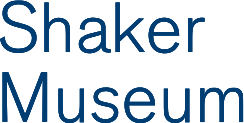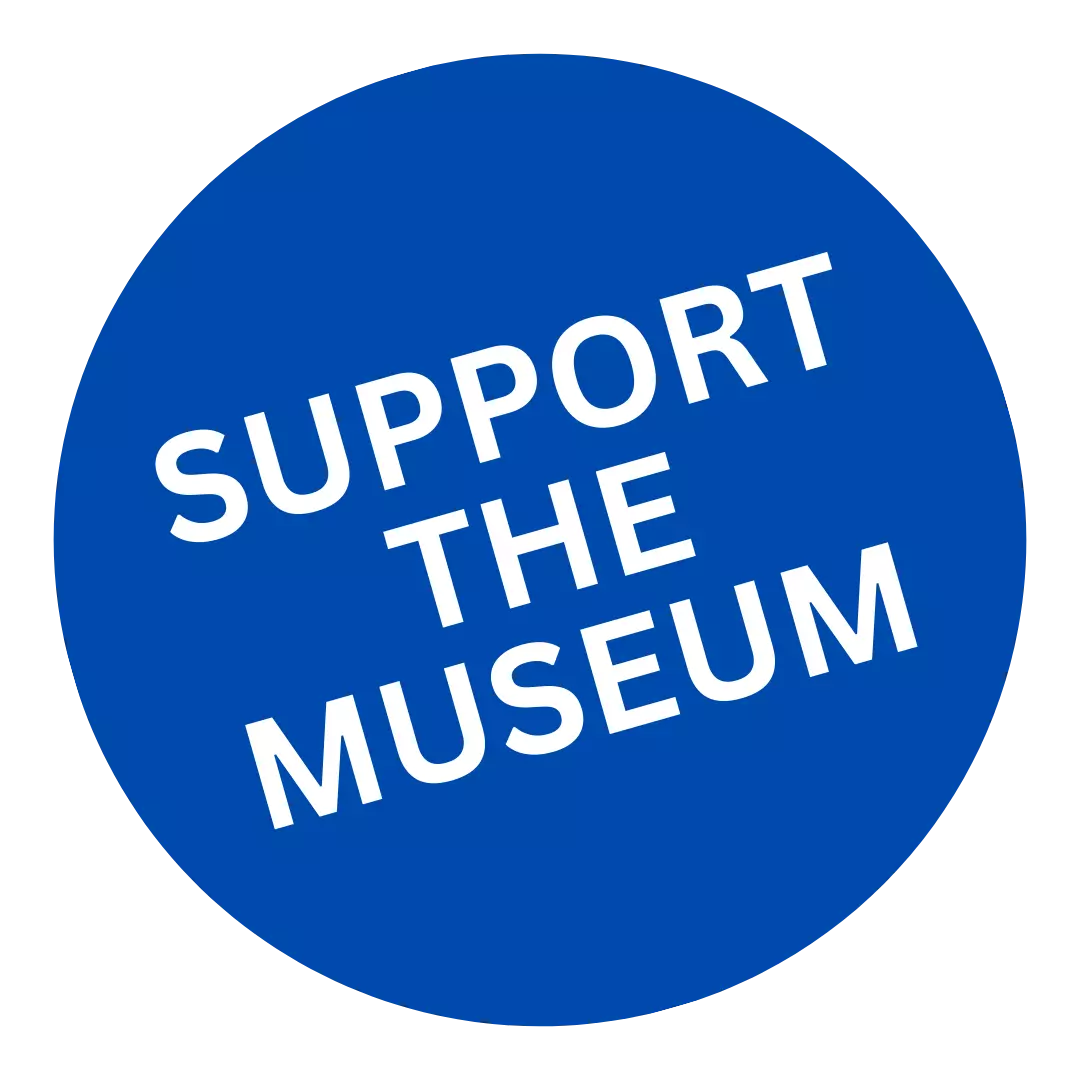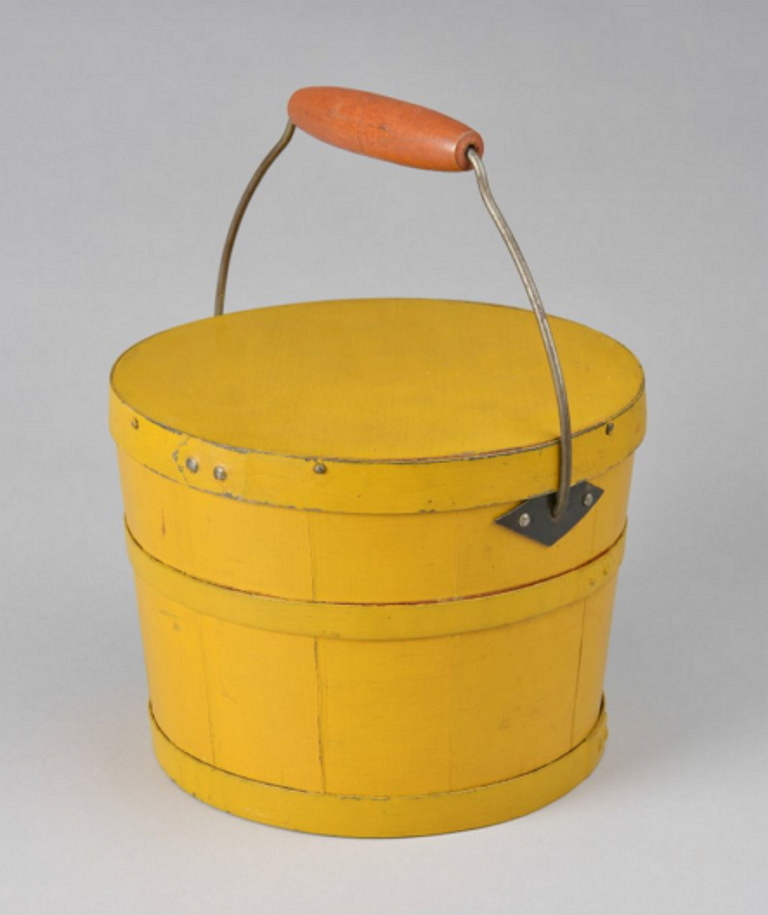Generator, Electrostatic
Electrostatic machine made in 1810 by Brother Thomas Corbett of Canterbury, NH
1810
Description
(.1) Painted pine container holding a turned cherry drive wheel on a steel shaft supported by two turned cherry support pedestals. At outer shaft end is an iron crank with L-shaped end on which is a turned birch knob. A leather belt around drive wheel fits over a turned cherry cylinder with seven steel pins protruding that engage holes in leather belt. Cylinder has a steel shaft through its center, which passes on through a glass jar with an orifice at either end. This steel shaft is supported by two more turned cherry standards each of which is reinforced by being bolted to yet another cherry turning that is tenoned into the same base as either support. A spring steel strap supports a leather covered cushion over which is fastened a further leather pad covered by green silk. An iron base holds the spring strap with a projection housing a steel thumb screw through the strap. This allows the pressure of the silk covered cushion on the glass jar to be adjusted. The glass rubbing on the silk generates electricity. A further turned cherry arm mortised into the rotating jar support on the opposite side of the machine from the drive wheel supports an iron rake-like part on a glass cylinder which insulates the rake. The rake is connected to a Leyden jar (a foil covered glass jar supported by a metal frame wit a cork stopper sealed into the top by red sealing wax) via a metal, topped by a lead sphere, which penetrates the center of the cork and disappears into a dark powder, which fills about a quarter of the jar. The rake-Leyden jar connection is effected by a steel chain with wire links. Next to the Leyden jar is a turned cherry support holding a 7/16" diameter cylinder of a black glassy material capped by a metal cylinder cap, which was possibly brass plated previously. Riveted to the top of this cap is an iron or steel wire arm terminating in another lead sphere. The arm rotates allowing the distance between the lead sphere at the top of the Leyden jar and that on the arm to be adjusted from direct contact to several inches distant. The pine box that houses this machine is painted yellow inside and out except for the underside of the bottom. The cherry turnings, drive wheel, and feet are all painted red except for the birch crank knob which is clear finished. (.2) Steel wire shaft with a lead sphere on one end secured into the end of a brass-plated steel cap on the end of a 5/16" diameter amber rod, that apparently served as an insulating handle. (.3) Steel wire wand with a lead sphere at one end. Identical to 1953.6365.2, but ferrule and amber handle have been lost. (.4) A blown glass vial with a cork stopper and a small amount of some sort of black powder, probably the same substance as is in the Leyden jar component. (.5, .6) Two carved cork spheres attached to a length of gold-colored thread. (.7) Square of leather with corners angled and center domed as if by being weighted when wet to permanently stretch fibers. The hair side of the leather is tan in color and grainy. (.8) Length of wire chain consisting of a starting link with the wire bent back on itself to form a hook, and eleven wire links with eyes at each end and joined end to end by means of wire circles. The last link terminates in a point. Individual links are 3 1/16" to 3 1/8" long, eyes have a diameter of 3/16", and connecting circles have a diameter of 9/32". (.9) Length of wire chain consisting of a starting link with the wire bent back on itself to form a hook, and eleven wire links with eyes at each end and joined end to end by means of wire circles. The last link terminates in a point. Individual links are 3 1/16" to 3 1/8" long, eyes have a diameter of 3/16", and connecting circles have a diameter of 9/32"(.10) Length of wire chain has a link with a hook at one end, and an eye at the other which is connected to the eye of the next link by a ring of wire. Six of these are joined end to end and the last terminates at an eye with a 3/4" diameter wire circle connecting chain to a larger wire ring. (.11) Length of wire chain consists of ten wire links with eyes at each end joined to form a chain terminating at an eye, a ring and a larger ring.
Notes
Shaker doctors used electric generators to produce and store an electric charge for a variety of medical treatments.[1] Turning the generators handle caused the horizontal glass cylinder to rotate against a silk covered cushion. The charge produced by these materials rubbing against each other was collected by a metal comb and conducted by wire to the tin foil-covered glass Leyden jar, where it was stored until needed. The patient sat on a chair or stool on a platform insulated from the ground by four glass legs. The physician used various attachments applied to the patients skin to channel the stored charge to the place needing treatment. The patient experienced a shock much like that felt by a person who touches a doorknob after walking across a carpet in dry weather. This electric generator or "electric battery," was made in 1810 by Thomas Corbett (1780-1857) of Canterbury, NH, and was "a decided improvement upon that of 1800." Corbett used this machine primarily to treat Shaker brothers and sisters suffering from soreness and stiffness of the joints. The Canterbury ministry chose Corbett at age 33 to train to be a physician. He learned medicine by studying with two doctors from the outside world as well as reading a book of remedies prepared by Brother Eliab Harlow, the doctor and herbalist at Mount Lebanon. While Corbett certainly used his electric generator for some medical treatments, he relied, as did all Shaker doctors of his time, primarily on treatments derived from herbs. In addition to his work as a physician, Corbett developed and managed Canterbury's business in pressed herbs, extracts, tinctures, and pills. Two medicines, Corbett's Concentrated Compound Syrup of Sarsaparilla and Corbett's Cherry Pectoral Syrup, as well as a Rocking Truss he developed for the treatment of hernias were all successfully manufactured and sold by the Shakers for a number of years.[2] [1] Thomas Brown, The Ethereal Physician of Medical Electricity Revived...(Albany: Printed for the Author, by J.G. Loomis & Co., 1817). Brown, a member of the Shakers for several years, gives a basic description of the use of electric medicine in the treatment of over 60 diseases. [2] "A Shaker Doctor," enclosure in a letter from Emma B. King, SM&L archives.
For more on the Shakers' use of electrostatic machines, see blog post: https://shakerml.org/electrostatic-therapy-and-its-use-by-the-shakers/
New Hampshire Canterbury

















